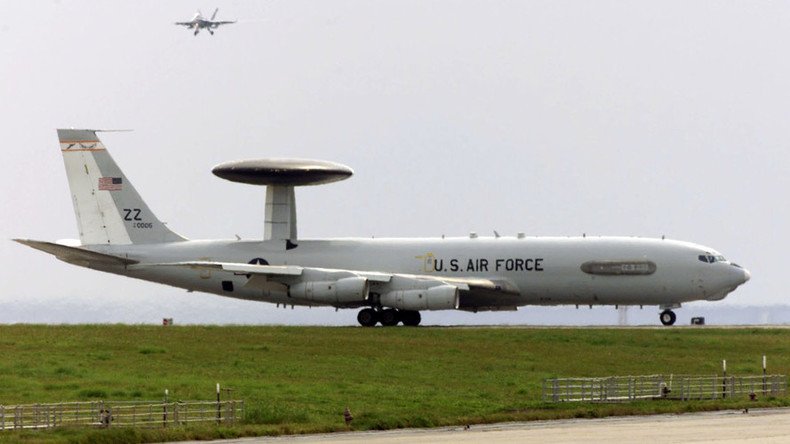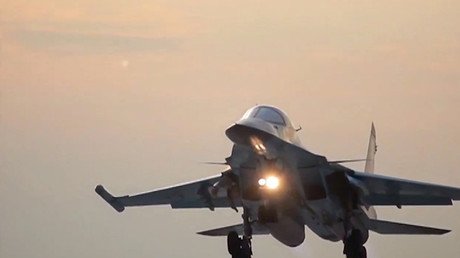US Air Force command apologized for close fly-by in Syria — Russian MoD

American military officials have offered apologies to their Russian colleagues for an incident over Syria, in which US and Russian military jets were involved in a "near-miss" situation. Earlier, Washington shifted the blame to Moscow for the incident.
Representatives of the US Air Force Central Command have promised their Russian counterparts to take measures and address the issue with American pilots so that incidents like this do not happen in the future, Russian Defense Ministry spokesman Major General Igor Konashenkov announced on Saturday.
The Russian ministry had to comment on the incident that happened on October 17 in Syria, as officials "were surprised with yet another attempt of the American military command to shift the blame [to] Russia's Air Force" for the near miss involving a US Boeing E-3 Airborne Early Warning and Control System (AWACS) with Russian Su-35 bomber.
Konashenkov blamed the crew of the AWACS plane for violating the flight security rules near the city of Deir ez-Zor in eastern Syria. The American aircraft went down almost a kilometer (0.62 miles) from its flight level and "dangerously" approached the Russian Su-35 fighter jet by less than 500 meters.
In accordance with Russia-US agreements in Syria, the Russian command had informed their American counterparts on the Su-35 flight in the area in advance, having provided them with the "exact flight level," the official explained. Following the incident, it was Moscow who contacted US officials and asked for explanations regarding the matter.
Despite the dangerous fly-by, the Defense Ministry said it believed that the incident “in general” proved that sufficient cooperation had been established between the Russian and American military in Syria.
On Friday, the commander of US Air Force Central Command, Lieutenant General Jeffrey Harrigian, said that the two aircraft in Syria — both flying without lights on — had been involved in a "near miss," adding that the Russian pilot probably didn't see the US plane in the dark. The US official claimed that cases like the October 17 incident are generally "not a big deal," but "it’s important to recognize this one got our attention."













